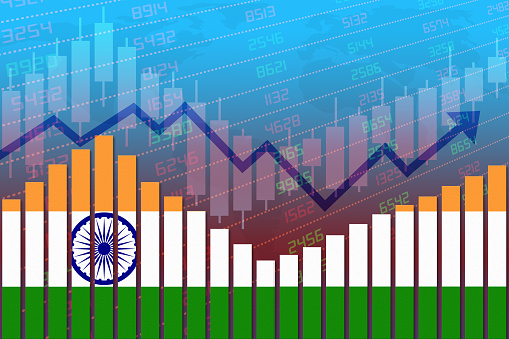Factors Affecting the Japanese Economy
We will look at the factors affecting the Japanese economy in this article. These factors include Structural reforms, Inflationary pressures, the Manufacturing sector, and Foreign trade. These factors are important in determining the future direction of the Japanese economy. However, they are far from the only factors that will affect the country’s economic health.
Structural reforms
Japan’s structural reforms are a critical element of its recovery. They have the potential to rejuvenate the Japanese economy and lift depressed sentiments about its future economy. These reforms can help shape management resources in the most efficient manner, while fostering free and creative activities in the private sector. These changes can also expand the country’s economic frontiers and encourage meaningful lives.
These reforms may also create a more competitive environment for smaller firms. Japan’s policy to promote privatization, for example, should help domestic industries. Deregulation is likely to help companies that are driven by domestic demand. The country’s current financial system is outdated by international standards, and it is time to establish a new financial system and business management style.
Japan has made significant progress in deregulation, with its new amendments in 1996 paving the way for the liberalization of financial services. As a result of these reforms, Japan has withdrawn from some protective measures. However, this progress has been gradual and reflects the government’s policy of reducing the government’s involvement in the financial system.
Japan has also made some progress in tackling immigration. It has cleared the immigration of foreign construction workers, but the decision still had to go through half a dozen ministries before it was implemented. Progress has been slow, but it has paved the way for more foreign construction workers and nurses. Still, there is political opposition to immigration, which can hinder the government’s efforts in achieving its objectives.
Japan is also expanding its role in international trade. It is a member of the Trans-Pacific Partnership (TPP), a free trade agreement with other countries in the Pacific Rim. However, to qualify for membership, countries must undertake significant economic reforms before gaining access to the TPP. The TPP also requires Japan to limit the influence of the agricultural lobby, which has been pushing against adoption of the treaty. These reforms are a sign of Japan’s commitment to open markets and limiting the influence of protectionist groups.
Inflationary pressures
The rise in the cost of imported goods and fuel has contributed to rising inflation in the country. The Bank of Japan is struggling to keep prices down due to supply and demand issues. Japan’s economy relies heavily on imports, particularly of durable goods like cars and electronics, but it is still experiencing price increases in a wide range of other goods.
This has resulted in an inflation rate of around 2.5% in Japan. The inflation rate has remained at this low level for several years, but the impact on Japanese households has been felt by price hikes that are unaccustomed. In fact, the Consumer Price Index for basic goods has risen to a seven-year high. According to data from the Teikoku Databank, prices have risen by as much as 13 percent since May last year.
In October, producer prices rose 7.9% year-on-year, the highest level since 1980. This was largely driven by an increase in import costs, which rose by 38% in yen terms. The increase in costs for petroleum products and lumber also helped boost prices. However, the Japanese public has been used to stable prices and companies have been reluctant to pass on higher costs to consumers.
As a result, Japan’s inflation rate remains below international standards. While the Japanese economy remains stagnant, the Bank of Japan is continuing to use large-scale monetary easing to keep prices low. The economy’s weak growth is expected to continue to put pressure on consumer spending in Japan.
The Bank of Japan has been resisting interest rate hikes, believing that raising interest rates will stifle demand and prevent the economy from growing. Increasing rates would be counterproductive in Japan as the economy has barely recovered from its post-deflationary slump.
Manufacturing sector
The manufacturing sector in Japan is experiencing growth and is undergoing major changes. The Yen’s weakness and the rising global wage rates are expected to increase the demand for Japanese suppliers. Additionally, local governments in Japan are actively working to promote regional development. The Manufacturing World brand is a significant part of this growth, as it will help drive future manufacturing innovations and import and export activity.
Japan’s rapid economic growth was driven largely by investment in manufacturing capacity. The high domestic saving rate made increased capital accumulation possible. This resulted in rapid total factor productivity growth. The rapid increase in output produced scale economies, which decreased per unit costs. Investment in infrastructure and the development of knowledge went hand in hand with the growth of the manufacturing sector.
The Japanese manufacturing sector is concentrated in several cities. The largest concentration is in the Kanto region surrounding Tokyo. The region also includes the prefectures of Chiba and Kangawa. Other areas with a large manufacturing presence are the Chukyo-Tokai industrial area and the Nagoya metropolitan area. Aichi, Gifu, and Kinki prefectures are also part of the Chukyo-Tokai industrial area. Other areas of Japan that are important for the manufacturing sector include Setouchi and southwestern Honshu.
In 2017, the food industry had the highest number of people working in the country’s manufacturing sector. In fact, the Japanese food industry is vital to the Japanese way of life and is among the leading industries in the country’s economy. The chemical, aerospace, and robotics industries are also important sectors of the Japanese manufacturing sector.
The Japanese manufacturing sector is one of the world’s largest, and the quality of its manufactured products is well known. Japan’s automotive industry is among the largest in the world, and is the third largest vehicle producer as of 2015. Other notable manufacturing industries include shipbuilding, electronics, and robotics. In addition, many Japanese manufacturers are globally linked, with major operations in Thailand and overseas.
Foreign trade
Japan’s foreign trade is heavily dominated by its relationship with the United States. In the early 1930s, trade between the two countries was growing rapidly, but it was offset by depression in the United States. The Japanese government began to restrain imports from the U.S. in response to the rising protectionist pressure. As a result, American politicians sought to shift the focus of U.S. trade policy away from Japanese imports and towards promoting U.S. exports to Japan. As a result, the United States obtained many concessions from Japan that benefitted American exporters.
In addition, Japan’s exports to the West began to increase rapidly. By 1988, the share of exports to Western Europe was twenty-one percent, compared to just five percent in 1980. The United States, Canada, and Australia were Japan’s largest importers and exporters in these years.
Japan also sought to open its market to foreign companies. In order to achieve this, the government entered into special negotiations with the U.S. called the Structural Impediments Initiative (SII). In return, the U.S. government made modest concessions to the Japanese government, largely in the form of reduced tariffs and relaxed regulations.
Despite these differences, Japan has developed a well-developed trade system. There are many trade and industry associations that promote commerce. The most prominent are the Japan External Trade Organization and Japan Business Federation. The latter group was formed in 2002 from the merger of the Japan Federation of Economic Organizations and the Japan Federation of Employers Association.
Increasing trade with China and other East Asian nations is a major reason for Japan’s exports. In 2009, China alone accounted for 17 percent of Japan’s total trade. Japan’s foreign trade with China was higher than with the United States, which indicates an increasing relationship between the two countries. However, the shift towards outsourcing has made bilateral trade flow measurements less useful.
Exchange rates
The exchange rate has a significant impact on the Japanese economy. The strong yen, for example, encouraged manufacturing companies to shift production overseas, affecting employment and consumption in Japan. Exchange rate volatility is also a problem for non-manufacturers. However, companies themselves are relatively less affected by the fluctuations.
The yen’s decline is driven by the interest rate differential between Japan and the United States. The US Federal Reserve aggressively increased its main interest rate from 0.25% to 3.25%, making the yen more attractive to investors. Lower interest rates tend to dampen the demand for a currency. Furthermore, the weak yen reflects Japan’s economy, which has barely grown over the last three decades and is one of the most heavily indebted countries in the world.
The impact of exchange rates on Japan’s economy is not easily quantified. The impact on manufacturing is largely offset by rising export quality. But the effect on labor-intensive industries may be greater. The impact on China’s economy is much less severe because the country has a managed exchange rate. The managed rate is backed by massive foreign currency reserves and strong restrictions on capital flows.
Despite the pressures from the currency market, Kuroda has been cautious. Worries about the possibility of a Japanese interest rate hike are spreading. It is possible that rising interest rates could stifle business activity and lead to recession. Nevertheless, Japan’s economy showed a positive performance in the April-June quarter. Slower deflation and a reopening of tourism and business are helping the economy bounce back.
Japan’s monetary authorities also took steps to stabilize the value of the yen. As a result, the yen has enjoyed an increasingly prominent role in the international economy.



